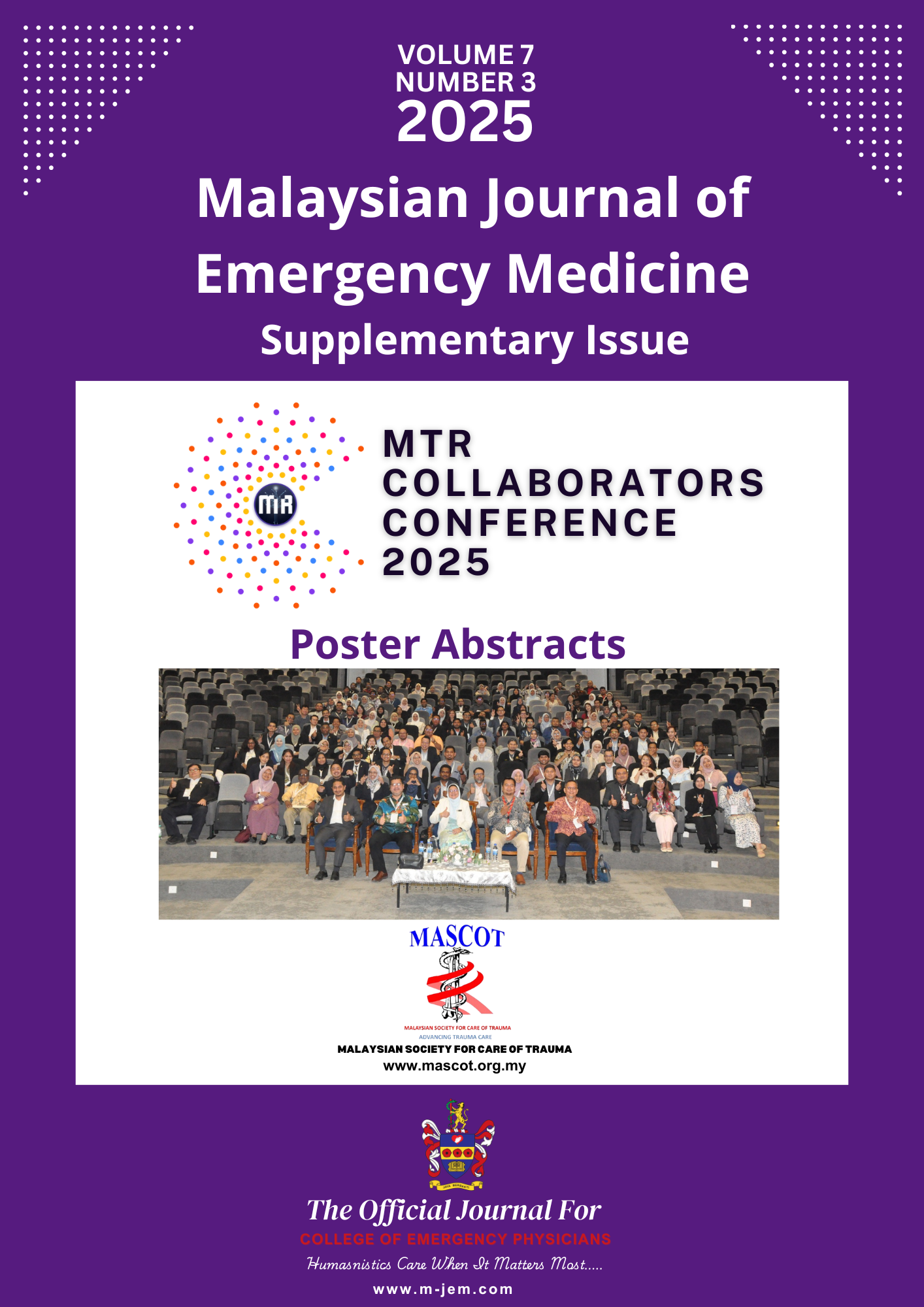A03 Trauma Pan CT Scan Protocol – An Effective Trauma Care Quality Improvement Intervention?
Main Article Content
Abstract
INTRODUCTION
Major trauma remains a significant global health burden and is the leading cause of death and disability in individuals under 40. In Malaysia, transport accidents rank as the fourth principal cause of death and the leading cause among those aged 0–40. Delayed trauma computed tomography (CT) scans hinder definitive care, contributing to morbidity and mortality in polytrauma. A Trauma Pan CT scan offers rapid, comprehensive imaging, reducing missed injuries and delays.
OBJECTIVE
To implement a standardised Trauma Pan CT Scan Protocol in Hospital Umum Sarawak to improve early injury detection, reduce delays, and enhance patient outcomes.
METHODS
A retrospective audit was conducted over 13 months (July 2023–July 2024) in the Emergency and Trauma Department of Hospital Umum Sarawak. Data sources included the High-Impact Trauma Checklist, major trauma audit forms, Malaysian Trauma Registry, and case notes. Variables included demographics, mechanism of injury, time intervals (arrival-to-CT activation, CT activation-to-completion, arrival-to-disposition), CT findings, post-CT management, and patient outcomes.
RESULTS
39 patients were included, 76.9% male, with 72% aged 20–39. Transport-related accidents accounted for 89.7%. Mean time from arrival to CT activation was 28.3 minutes, activation-to-completion 84.2 minutes, and arrival-to-disposition 7.4 hours. Most patients (84.6%) sustained multi-region injuries; 48.7% required surgical or radiological intervention, 51.3% were managed conservatively. Survival-to-discharge was 79.4%.
DISCUSSION
The Pan CT protocol reduced delays, expedited decision-making, and improved workflow efficiency. It increased detection of occult injuries, eliminated repeat CT requests, and contributed to better outcomes, consistent with international findings such as the REACT-2 trial.
LIMITATIONS
Small sample size and lack of pre-implementation data limited comparisons. Future multicentre studies are needed to assess cost-effectiveness and efficacy.
CONCLUSION AND IMPLICATIONS
The Trauma Pan CT Scan Protocol improved time-to-diagnosis, streamlined care, and enhanced trauma outcomes. Wider adoption across Malaysian hospitals is recommended, with strict activation criteria to balance benefits against radiation and resource use.
Metrics
Article Details

This work is licensed under a Creative Commons Attribution-NonCommercial 4.0 International License.

